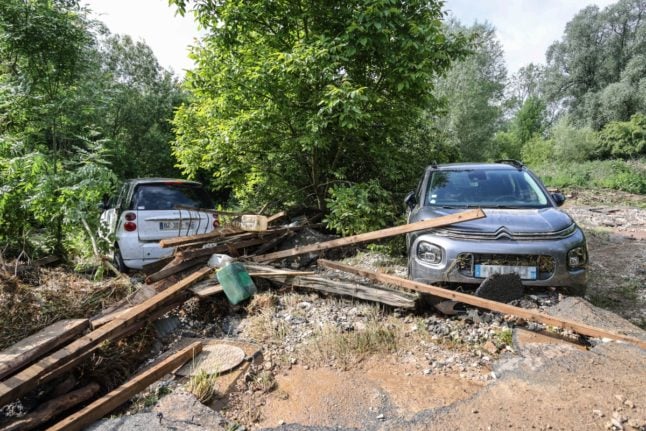Reader question: It’s only the middle of August and already the leaves have fallen from most of the trees – my lawn is covered with dead leaves like it’s the middle of autumn. Why is this happening and does it mean the trees are dead?
France is having a hot, dry summer and humans and animals are not the only ones suffering amid the heat. Plants and trees are looking pretty sickly in many areas and you may have noticed an unexpected sprinkling of dead leaves on the ground – one that you might normally expect for the fall months.
The short answer is that the trees are thirsty too. As a result of a lack of water, trees can lose their foliage, but if you’re a gardener you don’t have to worry too much: this is a self-protection mechanism.
While seeing leaves falling in early August might be surprising to you, it actually is a natural reaction from trees that are just trying to protect themselves from high temperatures.
Les feuilles ont commencé. Balayeuse qui est déjà sur une autre mission . . . #éboueurs #balais #paris pic.twitter.com/sMq3tVclpS
— Ludovic 🧹♻️ (@ludovicf_off) July 19, 2022
Nathalie Breda, the director for research at the National Research Institute for Agriculture, Food and Environment (INRAE), said trees are a lot like humans when it comes to heat: they sweat when it is hot.
“Transpiring is an active part of temperature regulation,” said Nathalie Bréda to French radio service FranceInter. “This is the first step the tree takes when the temperature is high – it pumps water through its roots, which eventually turns into water vapour once it reaches the foliage, later being released into the atmosphere.
“The tree will pump water through its roots, which will turn into vapour once it reaches the foliage, and which will be released into the atmosphere.”
This helps to keep the tree at a lower temperature than the air. The tree does this by ‘opening its stomata’ (similar to pores) – which allows the plant to release water.
However, once temperatures get even higher, and there is less water for trees to draw upon, then they ‘sweat’ less.
“Once the tree feels that there is less water in the soil, it limits the opening of the stomata to conserve water and preserve itself,” said Bréda.
This means that the tree gives up on its foliage to help conserve water, causing the leaves dry out and fall to the ground.
Do gardeners have to be worried?
While conserving water in this way can weaken the tree in the long term, it does not mean that the tree dropping leaves in your garden is dead. Most trees should recover, even if it takes several years after a drought to do so (as it did, for instance, with the years 1976 and 2003).
Trees shed their leaves in the fall when they sense cold, unsuitable weather is coming. It is the same principle where they seek to conserve water and energy.
That being said, when the tree loses leaves prematurely, this means it has finished growing prematurely for that season. Practically, trees need to open their stomata in order to photosynthesise, as this is the part of the tree that allows the entry of carbon dioxide. Failing to do this can put the tree at risk, as the plant needs to photosynthesise to remain healthy and protect itself against insect attacks and frost waves.
Bréda explained to FranceInter that “after the 2018 heat wave, all the spruce trees in Eastern France were killed by bark beetle insects. This happened because they were weakened.”
It also takes plants one or two seasons to be able to recover and build back up their reserves. Experts worry that with recurrent climatic distress, the plants will not “have the time to recover from one year to the next.”
A sign that the tree is suffering amid severe drought might be ‘weight loss,’ Bréda explained to FranceBleu. “When drought becomes very severe, we even see that trees lose weight. Meaning, they use the water in their elastic tissue to compensate for the lack of water in the soil.”
What can I do to protect my trees?
For gardeners or home owners looking to protect their trees, another idea is to trim the branches back – this would allow them to reduce their foliage and better conserve their water. The quick answer would typically be to simply water the tree, but with most of France on some level of drought alert – water restrictions are in place almost everywhere across l’Hexagon.
READ MORE: MAP: Where in France are there water restrictions and what do they mean?
For urban areas, Bréda recommends that cities reconsider the way of planting vegetation in the city: it is necessary to “review the size of the tree planting hole, and move the road (asphalt) away from its roots a little. This would allow the soil around it to better rehydrate when it rains.”



 Please whitelist us to continue reading.
Please whitelist us to continue reading.
Member comments